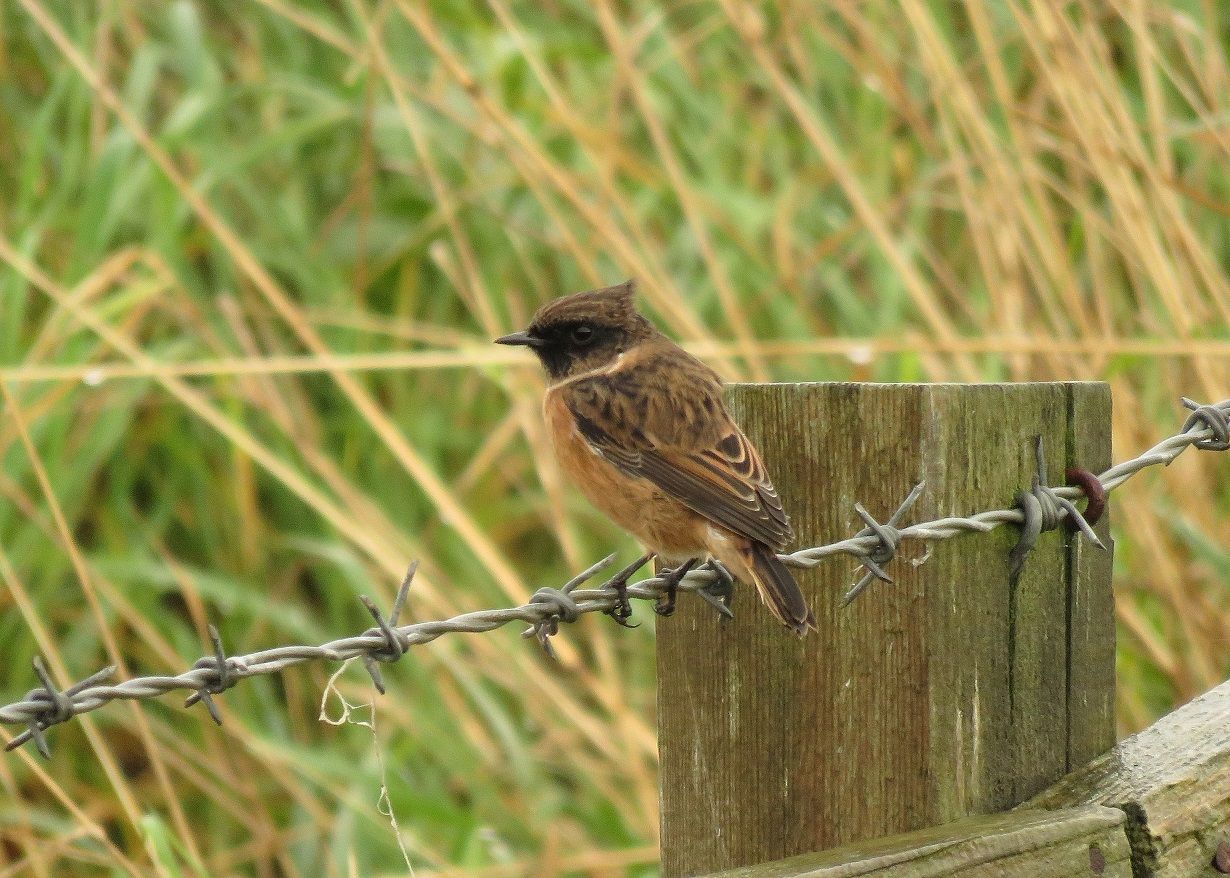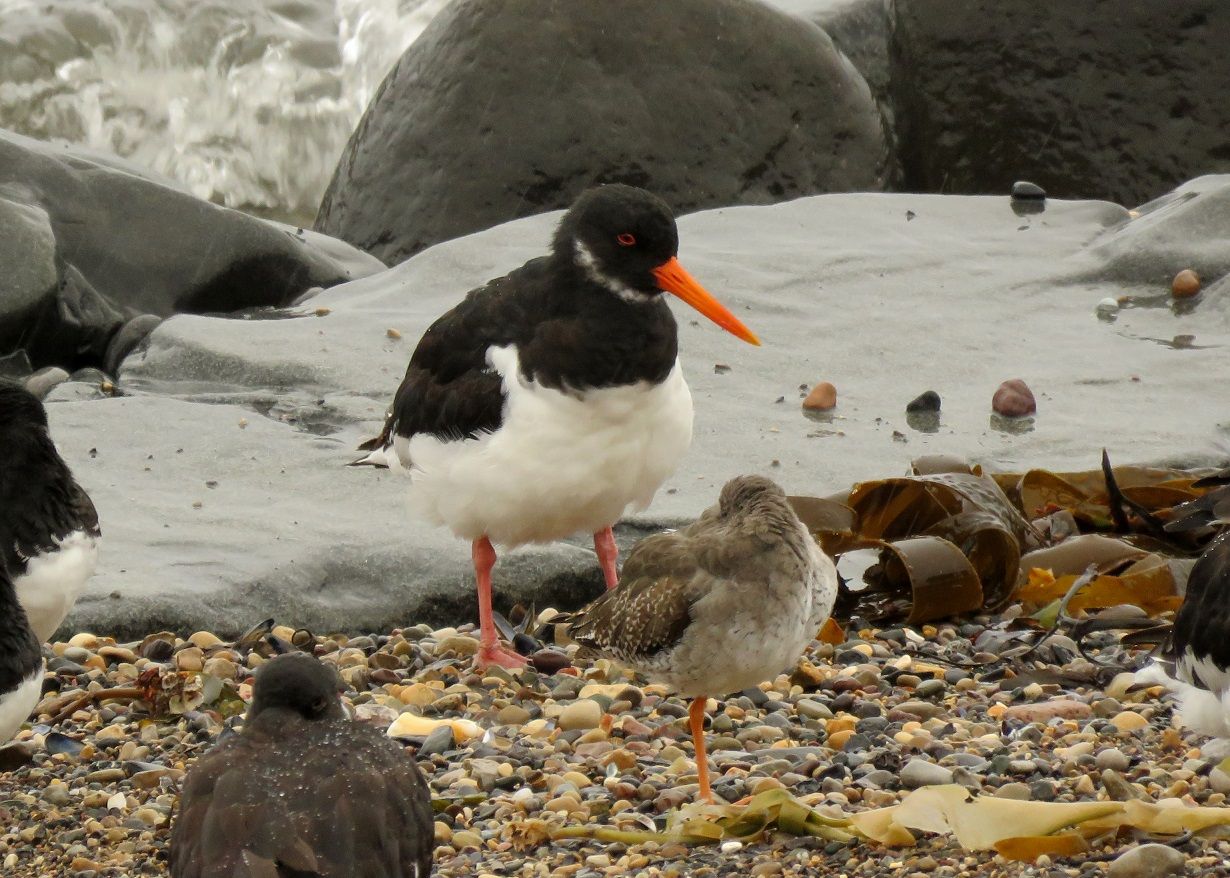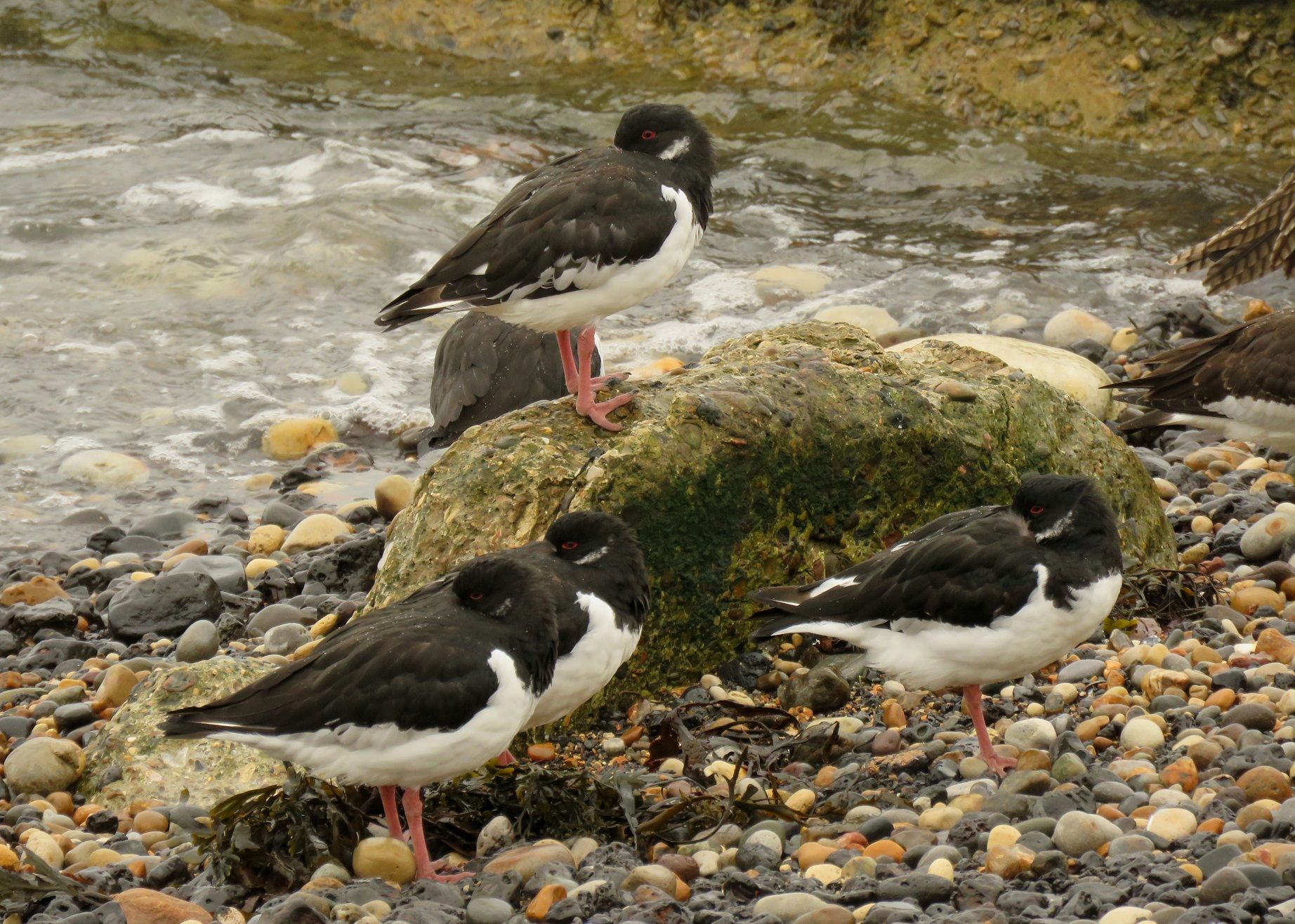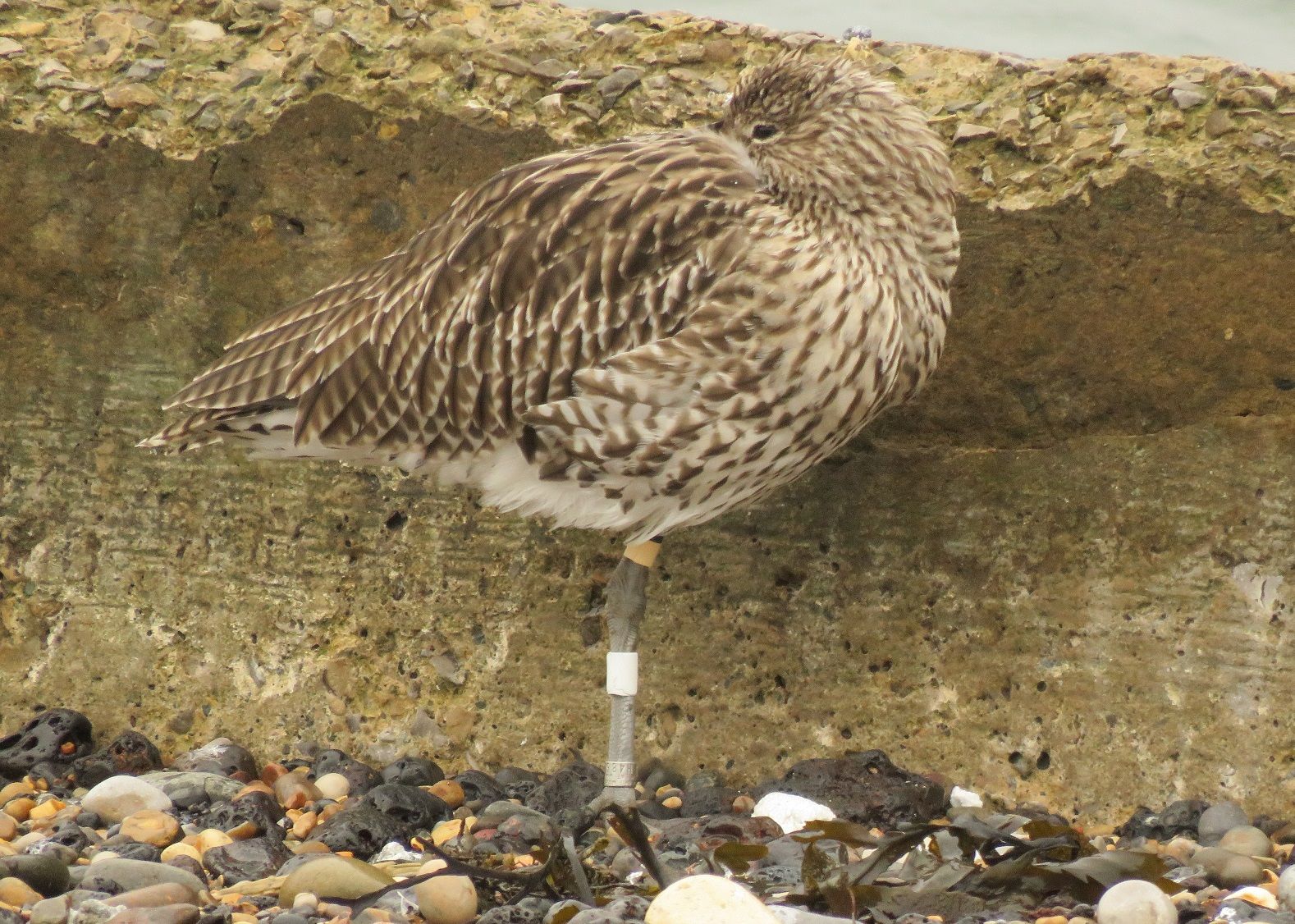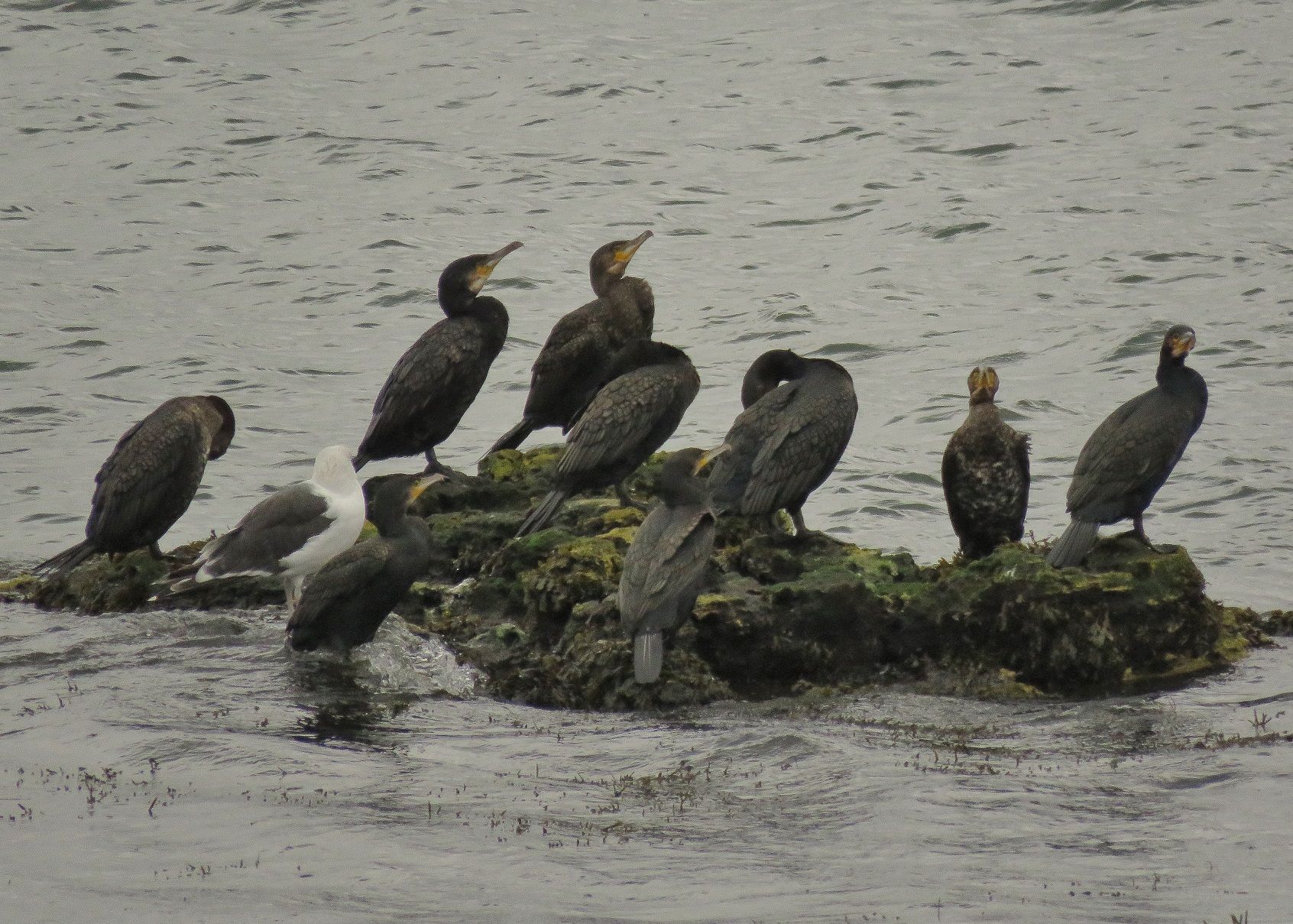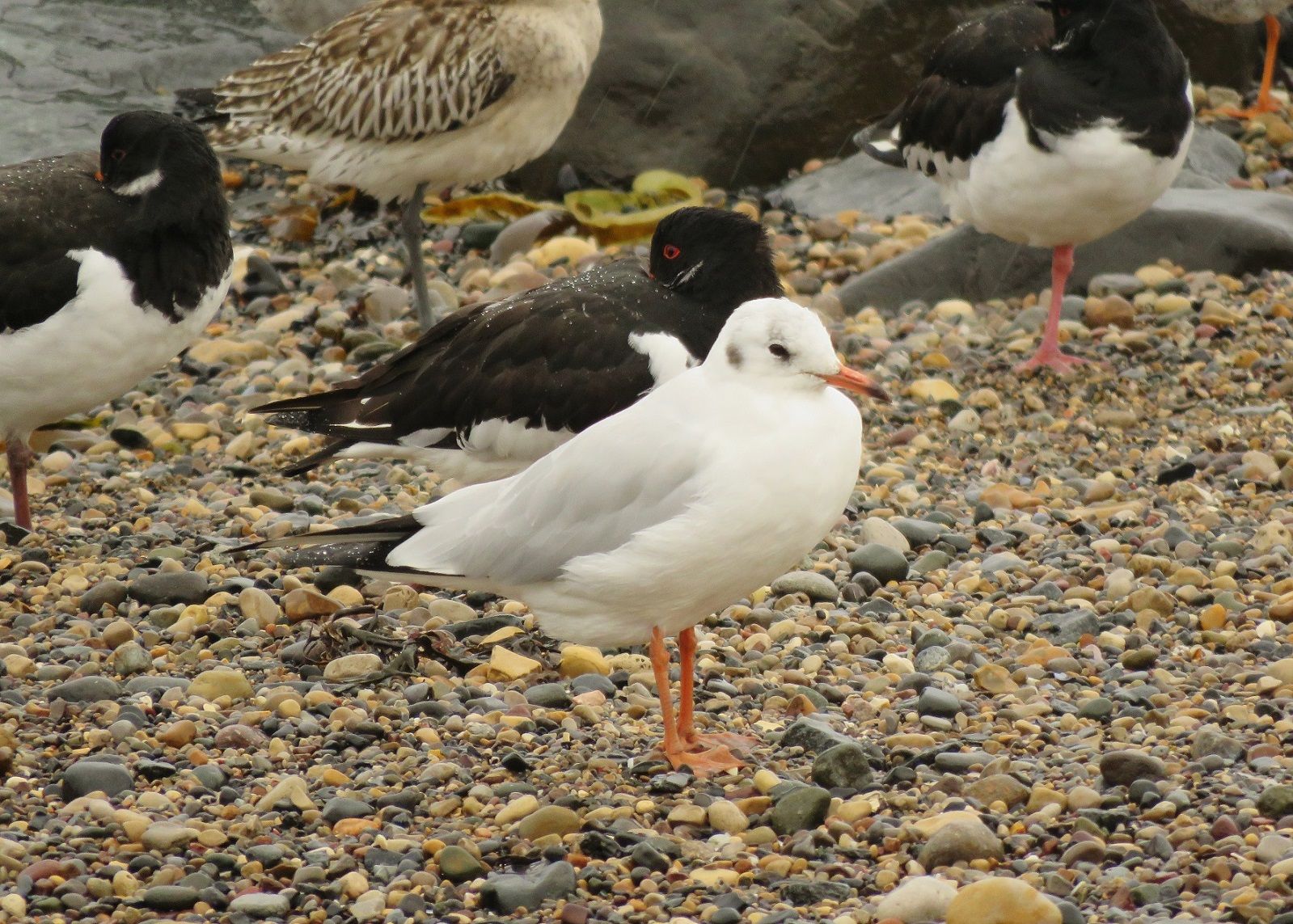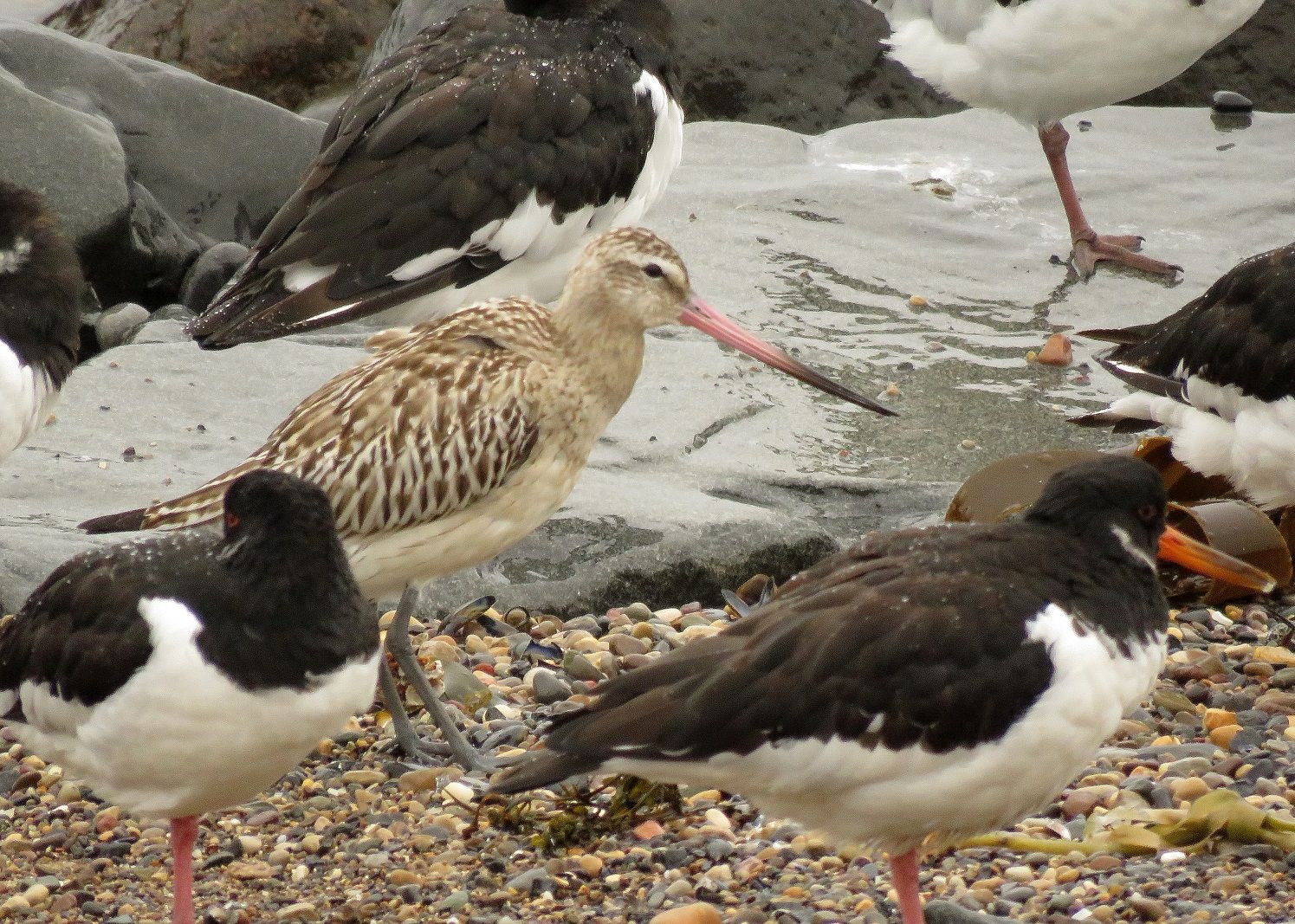Seven members attended this field trip starting at the Headland at 9.30. Low tide was at 06.30 so we had a rising tide. The weather was showery most of the day but the westerly wind wasn’t as strong as forecast. We could shelter behind the lighthouse buildings for our sea watching. There was a brief sighting of a Red-breasted Merganser on the sea. Gannets of all age groups were passing by with some of them diving for fish. Four Red-throated Divers flew past throughout the morning with two of them on the sea close in. A small number of Teal and Eiders flew past with up to 20 Common Scoters in total. Sandwich Terns and one Common Tern were still here. Some were diving, others flying by, others being harassed by four Arctic Skuas during the morning. 100 + Guillemots sere seen in small groups on the water and flying past and one small group of Razorbills. One Manx Shearwater and Little Gulls in 2 and 3s flew North. The resident seabirds were Black-headed, Herring and Great Black-backed Gulls and Cormorants.
At 11.30 we walked along the sea wall towards the docks. A Great-crested Grebe was on the sea close in near the Heugh Pier. On the remaining rocks there were groups of resting Cormorants with one Shag, Great Black-backed and Herring Gulls plus one Sandwich and one Common Tern. Oystercatchers, Redshanks and Turnstones were on the shoreline with three Purple Sandpipers. On the Heugh Wall there was a Rock Pipit, five Purple Sandpipers (one bathing in a puddle) and three Turnstones. Gulls were loafing towards the end of the Heugh.
Further along four Linnets were feeding on weed seeds beside the footpath. Two Pied Wagtails were on the shingle and at the end of the sea wall two Grey wagtails were on the rocky shingle with eight roosting Curlews. Among the roosting Curlew there was a colour ringed bird. It was asleep on one leg and refused to show it’s right leg. I photographed it to send to the Tees Ringing Group to see if they could identify it from the photograph. It was the same Curlew I reported to them on 21st November 2021 at Hartlepool Headland. It was rung as an adult on 21st July 2012 at Seal Sands and is a regular sighting at Parton Rocks and Hartlepool Headland between October and March. Several Grey Seals were seen swimming towards the docks and fish quay. We saw a Sparrowhawk hunting over the beach and as it approached the docks four Carrion Crows stared to mob it until disappearing over the docks.
Back to the cars we then headed to Newburn Bridge for our lunch. Among the Oystercatchers and Turnstones we were pleasantly surprised to find a Bar-tailed Godwit. I haven’t seen one here before. Further scanning revealed five Ringed Plover well camouflaged against the rocky shingle. This site is a good high tide roost for waders where the birds are only 20m away. To our left a male Stonechat was on the artificial breakwater rock showing well.
The next stop was at North Gare where we walked out to the Tees estuary. Management work has added a rock breakwater along the beach to protect a fenced bird nesting area on the beach. Unfortunately you can’t see the shoreline now. In the fenced area on a muddy pool there were seven Redshanks, a Dunlin and a Grey Plover. In the estuary there were two Red-throated Divers, four Great-crested Grebes, Cormorants and gulls. On our return to the car park we found a pair of Stonechats on the fence and a Linnet, two Magpies and a flock of 30 Goldfinches on the golf course.
Greatham Creek was our next stop. Upstream of the road bridge is a tidal area of mud flats with gullies and rough ground. The tide was now receding revealing mud for the waders to feed on. Three Grey Plovers were seen along with numerous Redshanks, Curlew, nine Black-tailed Godwits, three Little Egrets and a single Avocet. Grey Seals were hauled out on the Creek banks. A flock of Lapwings were on the shore by the road bridge and four Swallows were seen in the distance against some industrial storage tanks. One cream crowned Marsh Harrier was quartering along the far side of the marsh.
We then received a message from some friends at Seal Sands hide about a Long-tailed Duck. Just a 10 minute walk along the creek took us to the hide where we saw the distant Long-tailed Duck. Eventually it flew towards us and landed just below the hide. Out on Seal Sands there were hundreds of waders and Shelducks. The most common birds were the Redshanks, Dunlin and Oystercatchers plus two Greenshanks, a Grey Plover and a Bar-tailed Godwit. Shelduck numbers were well in double figures. A Spotted Redshank was with Redshanks on a tidal pool next to the hide.
Thanks to all who attended and regardless of the weather made it a very enjoyable and successful days birding.
The species total for the day was 63
Mike Smithson

